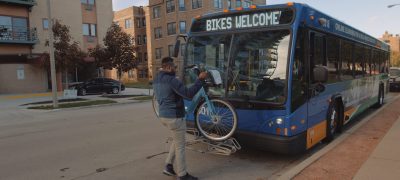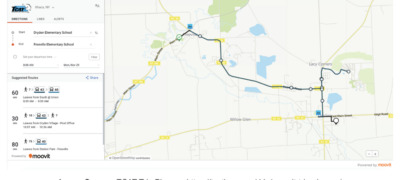Based on the N-CATT webinar presented by Carol Schweiger, Caroline Rodier, and Dwight Mengel on July 9, 2020.
What is Mobility as a Service (MaaS)?
MaaS is an integrated mobility concept in which travelers can access their transportation modes from a single interface. MaaS primarily focuses on passenger mobility allowing travelers to seamlessly plan, book, and pay for travel on a pay-as-you-go and/or subscription basis. MaaS combines multi-modal trip planning and integrated mobility services. It is not about getting rid of private cars, but rather accelerating the modal shift from private to shared resources. MaaS seeks to arrange public transport and other shared services on platforms more cost effectively (and at a reasonable cost to the traveler) with demand-responsive flexible shared ride technology. MaaS Service has different objectives based on geographic region.
Here are the goals of MaaS:
- Urban Mass seeks to reduce the total use of private cars, reducing congestion, parking problems, and emissions.
- Suburban MaaS seeks to eliminate the need for families to own the 2nd car, and provide first-/last-mile accessibility to allow suburban residents to use public transportation.
- National and international MaaS seeks to offer easy, all-in-one packages to allow easy use of public transit for everyone.
Universal MaaS
A single, integrated network of transportation and transit that together serve everyone:
- Universal Design
- With or without AVs
- One stop shopping
- Easy Discovery
- Easy Booking
- Easy Mode Transfers
- Easy Payment
Rural MaaS
Rural MaaS doesn’t look exactly the same as MaaS implemented in or planned for urban areas around the world. The objective of MaaS in rural areas is to increase efficiency and utilization rates of shared transportation options, as well as maintaining sufficient service levels and improving accessibility. Using Mobility Equity Indicators, it is clear that certain services should be given higher priority in a rural setting than others. For example, on-demand rideshare programs are much more effective in rural communities than bikesharing programs, and thus should be given higher priority.
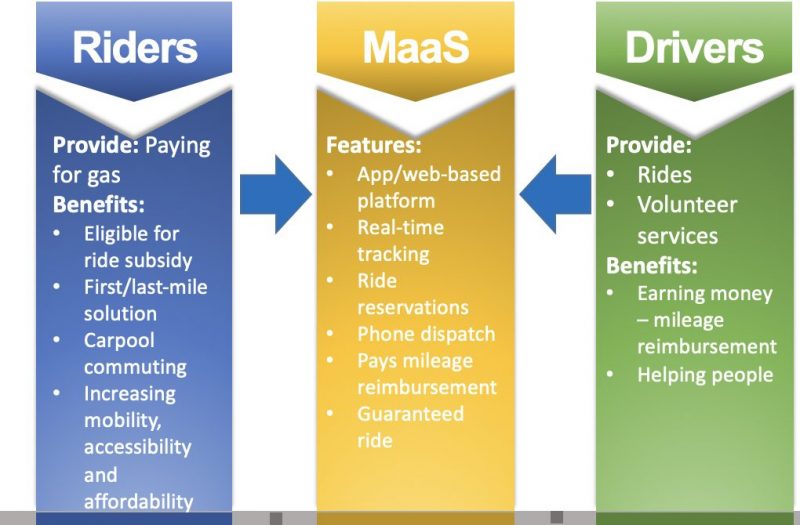
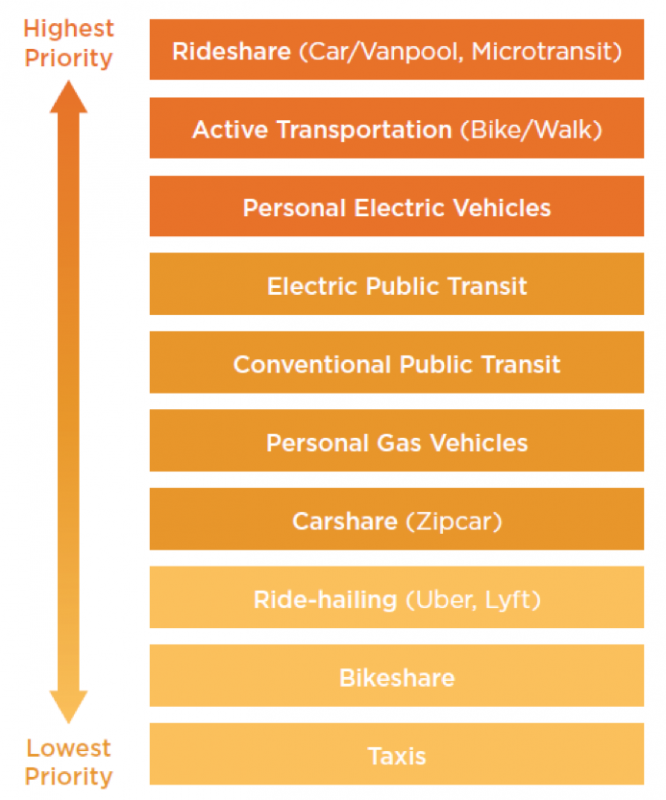
MaaS in Tompkins County
Tompkins County, New York, has been working on a Mobility as a Service project since 2010. Tompkins County has extensive mobility management programs in existence, as well as popular support from the county and public transit agencies. While implementing MaaS, the Tompkins County Transit Authority learned it was best to unroll MaaS in phases, with early multi-modal mobility services being implemented, and then built on. They also learned it is helpful to select a lead agency for the early roll out of new services. Advancing innovative practices constantly, as well as under-promising and over-delivering are a few other guidance tips for planning a MaaS system.
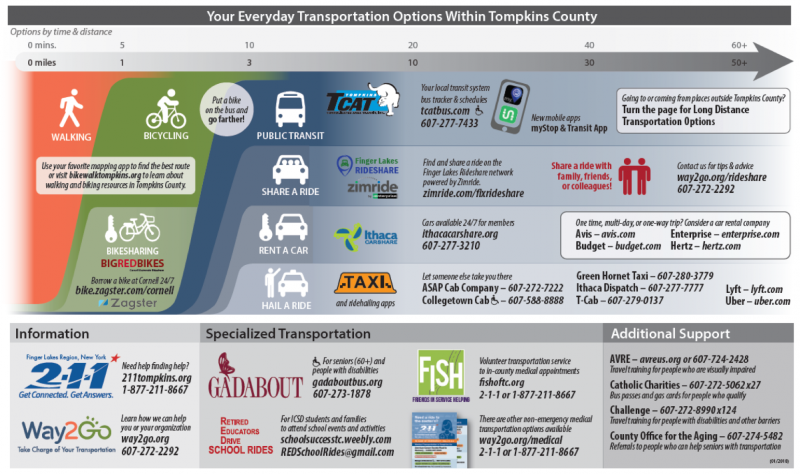
MaaS in San Joaquin Valley
The San Joaquin Valley in California is a mostly rural region that is classified by California as economically and environmentally disadvantaged. The large distances between households and destinations makes transportation services expensive, with low ridership. Most people feel compelled to use private vehicles, a financially difficult option. The lack of public transport options, compounded with high cost of auto ownership, puts a lot of people at a disadvantage. The University of California at Davis has led a community-based planning effort with the Valley to identify technologies and methods to increase transit availability, to investing in electric vehicle carsharing services, and to plan and implement a rural regional MaaS system.
Our Experts
Carol Schweiger is the President of Schweiger Consulting. She has over 40 years of experience helping transportation agencies with technology technical assistance She has developed numerous modules and reports, including three full TCRP reports.
Dr. Caroline Rodier is a researcher at the institute of Transportation Studies at UC Davis. Her major areas of research include transportation and environmental planning and policy analysis.
Dwight Mengel is Chief Transportation Planner of Tompkins County, (Ithaca) New York, with a 30-plus year career developing community mobility services from positions in the departments of Planning, Public Works, Public Transportation and Social Services.

